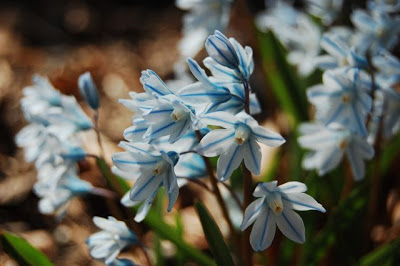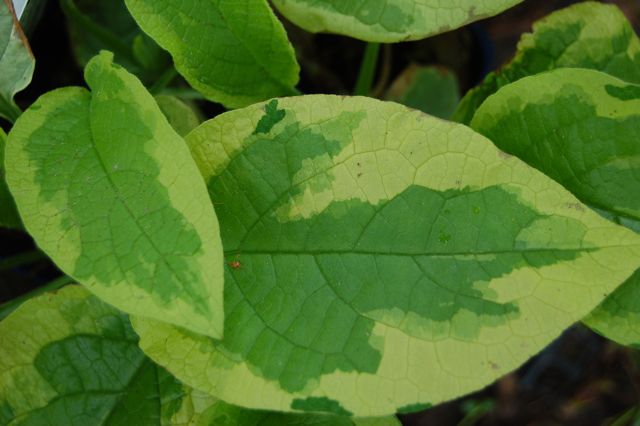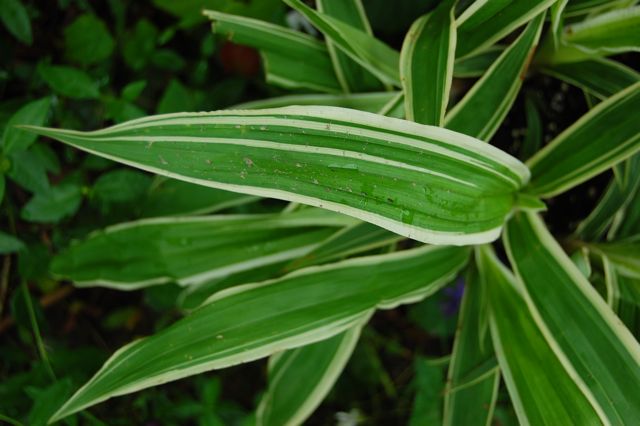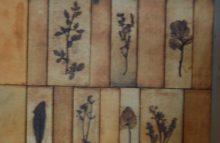| A splash of morning sun helps this dry shade front bed |
Dry shade can be a gardener’s worst nightmare. It’s definitely a challenge. I know. I’ve been a dry shade gardener (on sand…under Norway maples) for 25 years. Many of Toronto’s city gardeners are in my dry, shady boat. But like any problem, dry shade can be if not overcome then managed with some research, some experimentation, and some compromise.
First, know that there’s shade and then there’s shade. Dappled shade under the light canopy of a locust tree isn’t as shady as open shade beneath soaring oaks, which isn’t as shady as deep shade on the north side of a building. Moving shade – where a spot is shady only at a certain times of day or year – might be less shady than you think. If the “certain time” is morning, it can be less challenging than if morning shade is followed by a blast of sun in the heat of the afternoon. Alternatively, you can design a shady garden to be at its peak in spring, before the leaves appear.
 |
| Spring bulbs such as striped squill (Puschkinia) can shine in dry shade |
Dryness can be relative, too.
If the underlying soil is sand, like mine (oh boy, yes) water drains through quick as looking at it. Plants that demand good drainage, however, can be happy here.
On clay, the water may pool and refuse to drain, or the soil might set like cement when it’s dry. But plants needing richness will get more of what they want from clay than from sand.
In each case, a generous annual lacing of organic matter such as compost or chopped leaves and a midsummer application of mulch can help slow water percolation down, hold moisture in or prevent further evaporation.
Dryness also comes from what’s making the shade: usually trees. Their roots are the tree’s drinking straws – when transpiration in the leaves sets up a chain reaction that slurps up moisture from the soil. Those roots occupy the same top few inches of soil where you are hoping to garden.
 |
| An understory tree in nature, Amelanchier can take some competition |
It’s competition for water and nutrients from all those roots – and not merely the quantity of light – that can be the biggest part of the dry shade challenge. Norway maples, Toronto’s most-planted street tree, have a particularly fibrous, thirsty, thuglike network of roots. Other trees can be more companionable.
So the degree of your dry shade problem depends on your own formula of shade, soil structure and root competition – which might differ from spot to spot. Awareness is the first tool a gardener needs.
Research, research, research. Some plants are known for their dry shade tolerance. Geranium macrorrhyzum or big root geranium is one. Epimedium or barrenwort is another. I grow both these tough ground-covers. Hosta is often recommended for shade, but it does require some moisture. For dry shade, this Transatlantic Gardener article by Graham Rice suggests a couple that I’ve been growing for years (H. tokudama and H. lancifolia), and one that I’ve since sought out (Hosta ‘Elegans’).
 |
| A young Hosta ‘Elegans’ – slow growing and woody rooted |
But a willingness to try a plant on the borderlines of suitability (always feeding your soil!) – and to compromise on benefits such as mature plant size (likely smaller) or flowering (sometimes none) can extend the plant palette in the dry shade garden.
Foliage is the main event in dry shade. The images below illustrate two strong foliage plants that I’m pushing the boundaries with in my garden this year. Check back here for the update.
Also check out this month’s Garden Designers’ Roundtable, where nine smart garden people from around the U.S. and UK offer a ton and a tonne of inspiration and information on the topic of shade. My post is simply a mirror of that meme.
 |
| Comfrey is an extremely tough customer in dry shade. I’m hoping for the same performance from its variegated dwarf cousin, being used as an edging plant, Symphytum ibericum ‘Goldsmith’ |






8 comments
Research, research research…Helen that is sage advice. That's exactly how I discovered plants that tolerate my shady, clay soil. Like you, I do push those limits! It's really fun. gail
Great post! Dry shade is awfully difficult.
So sorry that you have Norway maples sucking up all your water! What a challenge. Aren't you glad to see all the new epimediums coming out? Though maybe some of the showier ones will lose some drought tolerance. I've keep noticing 'Alabaster' and wonder if I can find a spot for it.
Good to note the bigroot geranium does well. It is very popular here. Excellent post- thanks! 🙂
I'm so glad you participated on this theme with the Roundtable, Helen! Excellent post with great information and lovely images to inspire shade gardeners.
Gail, Although I often moan and groan about my dry, sandy shade, it's fun to see what can be accomplished within the constraints. I'd probably overindulge like a starving person at a banquet table if I ever had a sunny, moist, loamy garden. Or even a moist garden under dappled shade. Sigh.
Thanks, Cristina! I love a challenge.
VW, Epimedium 'Alabaster' does look like a pretty one. I have E. rubrum and E. sulphureum, plus a dainty little E. youngianum niveum that hangs in, but gets hidden by other foliage. I'm trying to be better about massing plants like epimedium, rather than the one-of approach that hides my youngianum. This year, I added a large patch of E. rubrum under the 'Bloodgood' Japanese maple. I like the symmetry of colour, and might even add more.
Ms. S, the bigroot geranium grows lustily in my toughest (driest) corner. However, it doesn't put out many blooms. That's my compromise. But as a weed-suppressing carpet of green, it's hard to beat.
Pam, Thanks for hosting the Roundtable. It was an inspiring topic!
More than a year after the last comment….here are my two cents; I am 'blessed' with clay soil and 100+ year old Silver Maples whose capacity to draw moisture out of soil is comparable to that of a industrial desiccator. Established shrubs (after much effort) and spring bulbs do fine. The challenge was finding perennials that work. Here are my success, ranked by quality.
1. Helleborus foetidus (Stinking Hellebore)
2. Helleborus multifidus
3. Helleborus orientalis
4. Epidmedium sp.
5. Vinca minor (periwinkle)
6. Roof Iris (Iris tectorum)
6. Corydalis lutea (starts to go dormant in the driest weather)
6. Hostas with blue waxy leaves
Stinking Hellebore is an unwavering dark green architectural marvel all year long (dry summers & zone 5 winters). Need to consider that it's a short lived perennial (3-4 years), the spring flowers are a bit unattractive and, the flowering stems die but it seeds really well and an established population acts as a good 12" tall ground cover.